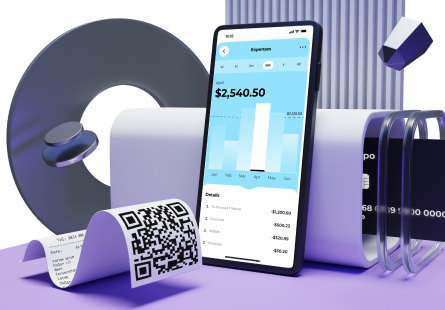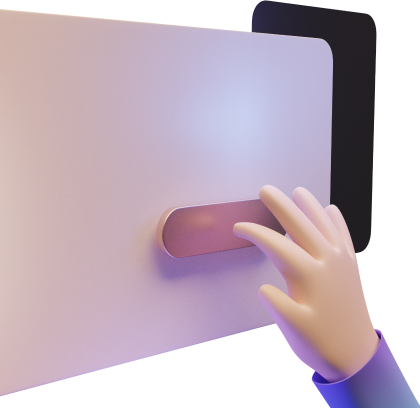“By failing to prepare, you are preparing to fail.” – Benjamin Franklin
No matter how incredible and original the project’s initial idea may be, the customer does not always immediately receive precisely the product he wants.
Even if the customer formulates his idea very clearly and the development team can fully understand the concept, the customer usually concentrates on the product’s primary function and doesn’t pay much attention to different areas that should be covered. Still, they will have a significant impact on the development of the project later.
Some of the topics that it is critical not to miss in the early stages of the development process might be:
- Security and data storage requirements and solutions to use
- Sources of data and protocols of their interaction with the product
- User flows that cover the core actions of the product
- Informational architecture of the user interface
Revealing several problems already in the development process causes undesirable changes in the already written code and unplanned budget spending and, as a result, missed deadlines or even project failure.
You can avoid this outcome for the project by conducting a discovery phase.
What is the Discovery Phase?
Discovery Phase is a pre-development research and planning process aimed at gathering information to define the requirements and analyze the customer’s business needs.
Its primary goal is to eliminate financial risks for the client and make the development process as smooth and predictable as possible.
During this stage, all project specifications are collected and analyzed from various aspects: product objectives, technical requirements, user interface, functionality, strengths and weaknesses, the must-haves for creating an MVP, best implementation strategy, and deadlines. As a result, a client gets detailed project estimation and development costs.
An average discovery phase lasts three weeks. However, its duration can vary from one week to two months depending on the project’s scope.
Why Do You Need Discovery?
The project discovery phase is the most reliable way to understand your product better and, as a result, get well-defined estimates and requirements for your final product launch. In addition, this phase helps you define how much time and money you need to reach your business goals and attract investors’ attention.
The discovery phase is helpful to:
- Identify the team composition
- Define the project scope and business goals
- Analyze the competition
- Formulate precise project requirements
- Identify bottlenecks
- Build a risk management strategy
- Create a user-oriented experience
- Estimate the project budget and development timeline
Who is Involved?
The discovery team is composed depending on the project’s specifics and consists of specialists with diverse expertise to cover all aspects. They usually have years of experience in software development, an impressive portfolio of successfully launched MVPs, and can deliver exceptional results in tight timeframes.
So let’s meet the team of specialists you’ll need for your product discovery phase:
- Project Manager
In charge of effective communication between the client (product owner) and the team, the Project Manager guides a client through the discovery phase and defines directions that should be explored in more detail. He also makes sure nothing is missed and all the details are taken into account.
- Business Analyst
In cooperation with the client (product owner), the Business Analyst identifies and clarifies the project scope and requirements, makes detailed market research, evaluates the business potential of a customer’s idea, and turns it into a concept.
- Solution Architect
The Solution Architect provides technological research and prototyping, defines the most suitable architecture for the solution, decides on the technology stack, and prepares the architecture documentation. The Solution Architect creates a solid foundation for the software project to ensure that it will be scalable and flexible during the future rapid growth of the product.
- UI/UX expert
In cooperation with the business analyst, the User Experience Designer performs user research and competition analysis and creates wireframes and prototypes to bring the product vision to life. The User Experience Designer analyzes primary user flows, prepares the informational structure of the future product, and covers with wireframes all the essential features and flows of the product. He also makes sure that the future application will be user-centric and easy to use.
- Lead Software Developer
Working with the architecture documentation, the Lead Software Designer is responsible for technical solutions, helps to clarify technical requirements, plans the product development process, and makes time estimates.
Key Benefits of the Discovery Phase
If you still doubt the importance of the project discovery phase, here is a summary of advantages you will get as a result:
- A better understanding of your project scope and business goals
- Fewer development costs and a properly planned budget
- Knowledge of your customer’s needs and effective market positioning
- Architecture and technology stack tailored to business objectives
- Wise planning and risks elimination based on expert research
- The ability to beat your competitors by discovering their weaknesses and making your final product better
- A chance to understand whether cooperation with a contractor is a good idea and to decide future partnership
If you decide to skip the discovery phase and start the development process immediately, you put your entire project at risk and increase the chance of its failure.
Let’s be straight here: discovery phase can save your startup from failure.
What are the Deliverables?
What will you get by the end of the project discovery phase? Discovery phase deliverables vary according to your needs and requirements, project size, and urgency, but these are the most common ones:
Product vision
Describes the overarching long-term mission of your product. The product vision statement should answer the question of why you are creating a product and what your company expects to achieve with it in the future. For example, Google’s product vision statement is to “provide access to the world’s information in one click.”
System Requirements Specification (SRS)
This document (or set of documents) explains how technical challenges will be solved. In addition, the system requirements specification contains a suggested technology stack and architecture outline, recommended features, suitable third-party solutions, security tips, etc.
UX/UI concept
A simple representation of the future interface and its core features. The main goal is to build a visually appealing and easy-to-use solution. A UX/UI concept should ideally consist of 2 parts:
- Wireframes (display the preliminary idea of the future UI/UX infrastructure)
- Clickable prototype (helps you test real user experience before starting the development process)
MVP development plan and estimates
At the end of the discovery phase, the client receives a fully fledged concept of the future application and its workflows, scope of work, time and budget estimates, suggested team composition, project roadmap, and backlog.
Conclusion
In software development, careful analysis and planning can prevent many failures. The discovery phase is essential for business owners who wish to complete their project on time and on budget.
By investing in project discovery, you can validate your concept, reduce risks, get answers to important questions, discover your target audience and user needs, define your budget, and decide how to move forward. In addition, knowledge gained during a project discovery phase will save you from mistakes and failures.
At DeepInspire, we always suggest a discovery phase to our clients. Our team dives deep into a project during the discovery process and develops exceptional solutions customized for our clients’ needs.







